Cranes and Rigging www. sarens. com Understand
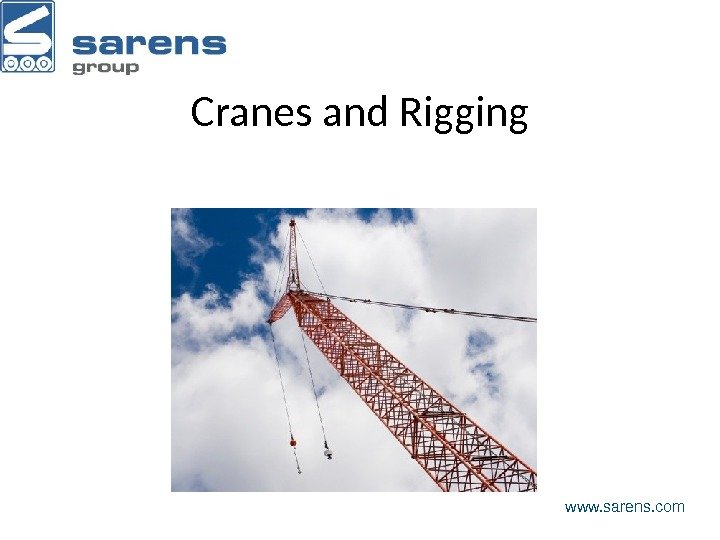
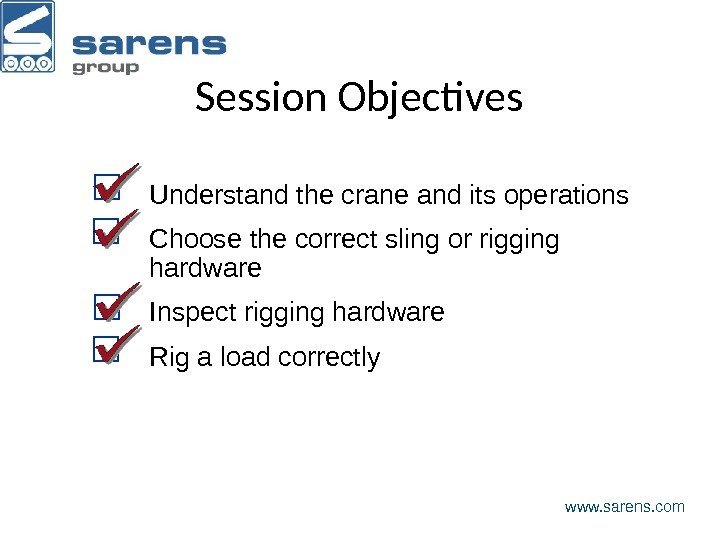
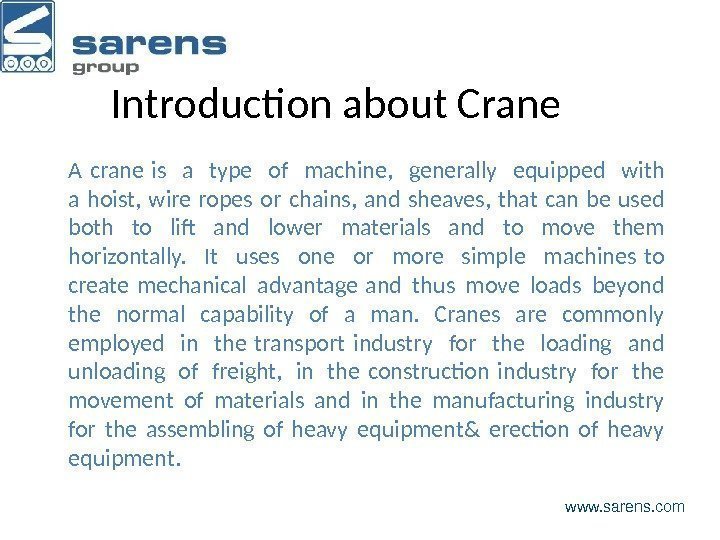
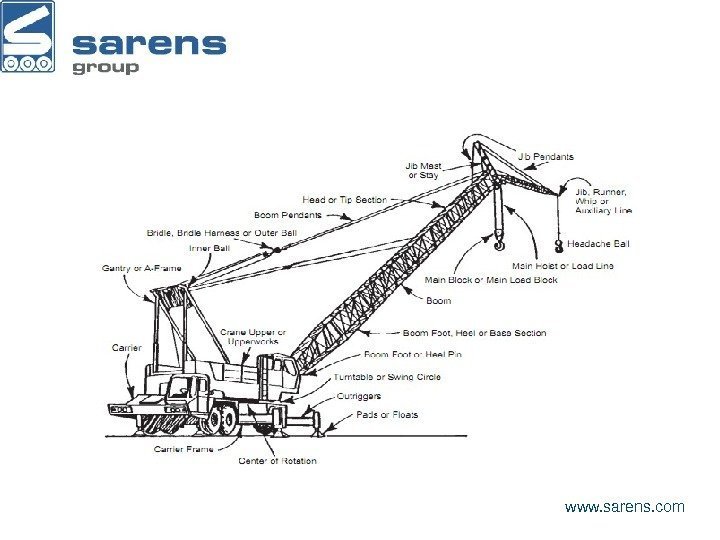
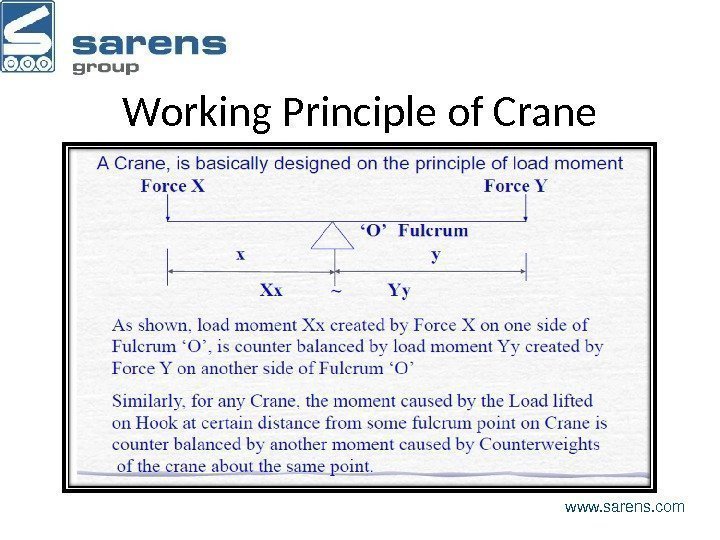
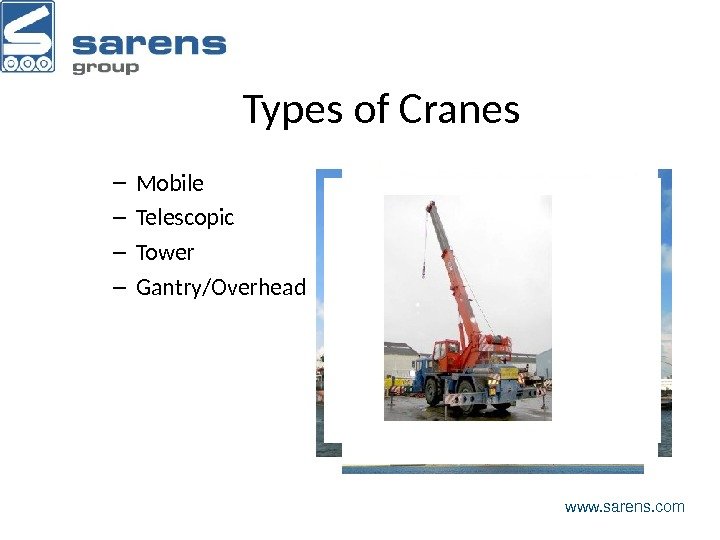
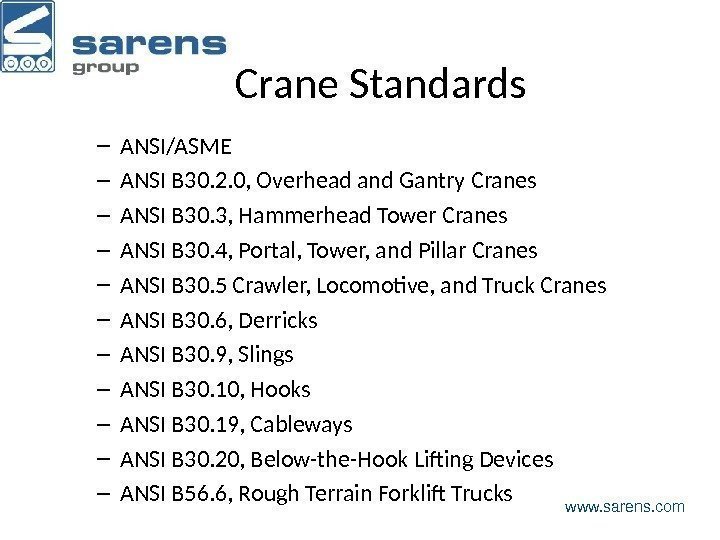
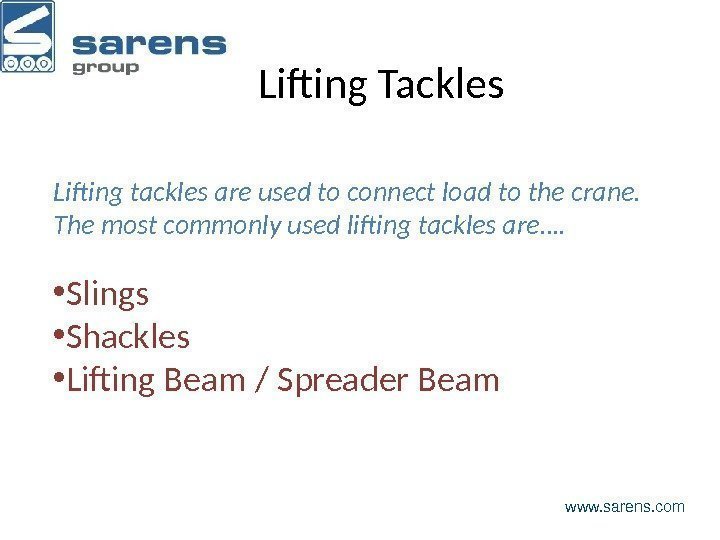
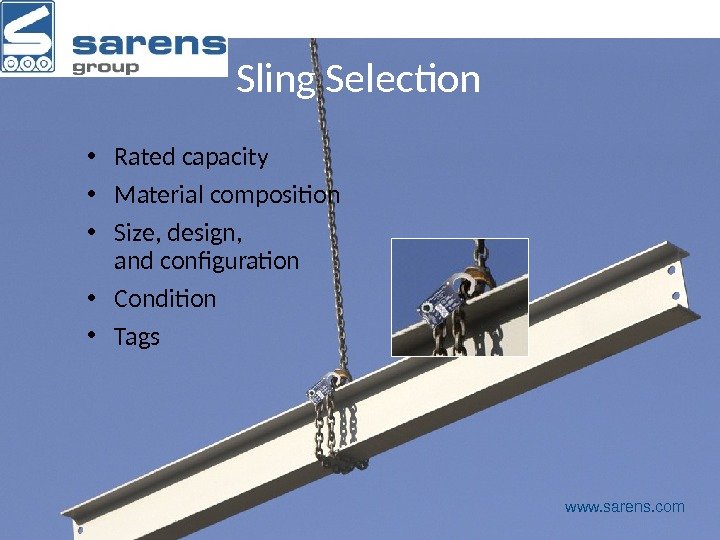
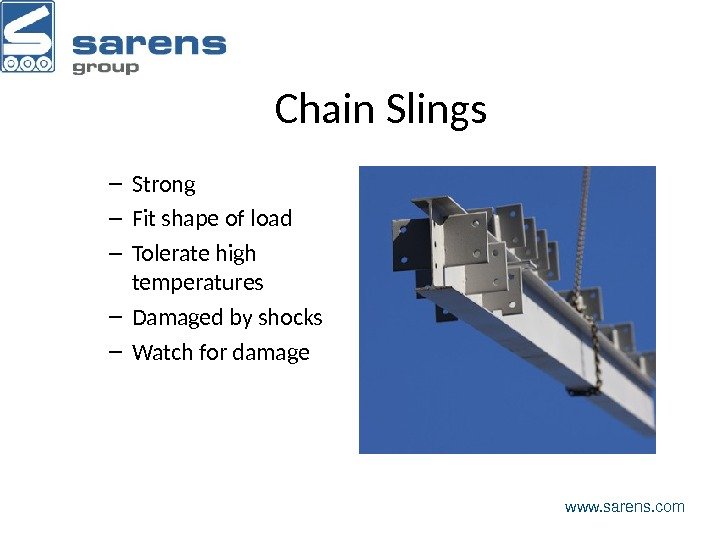
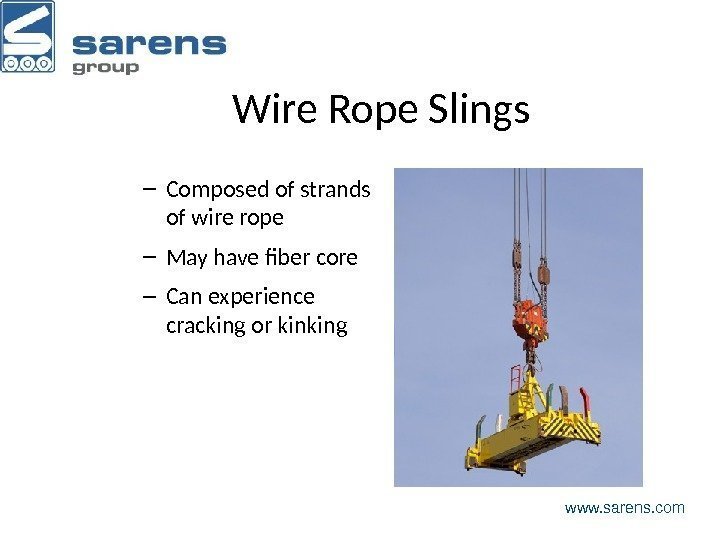
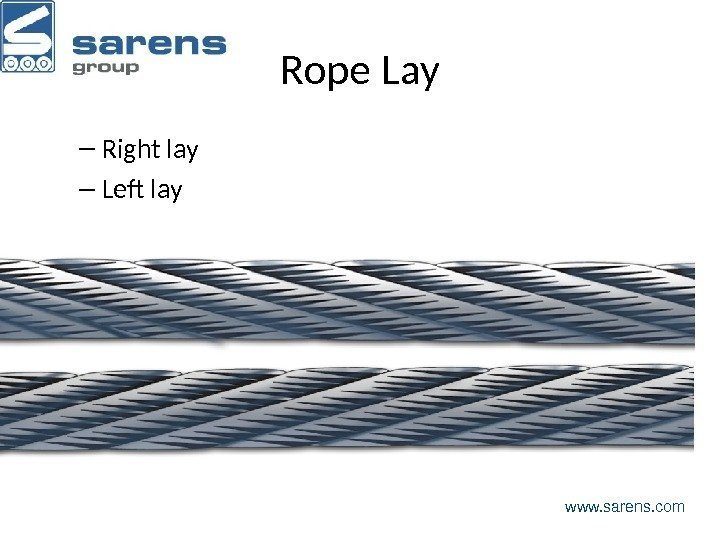
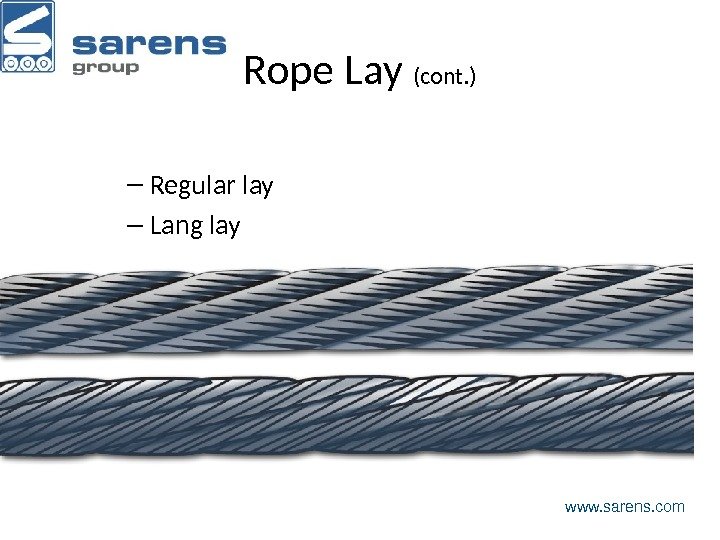
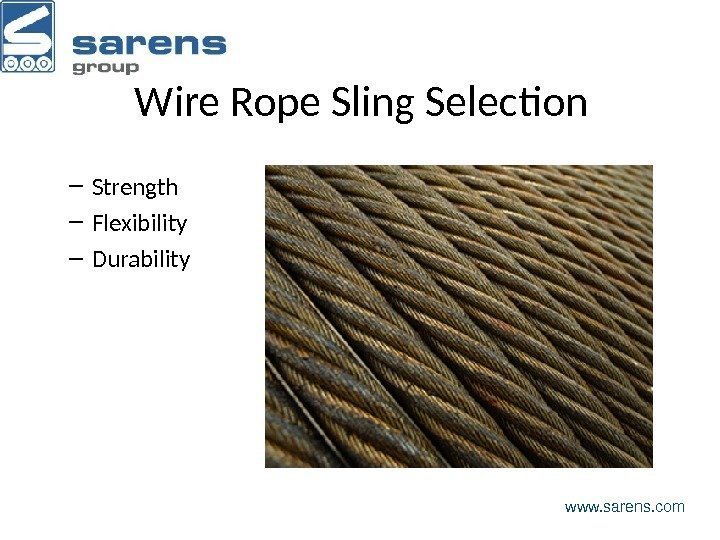
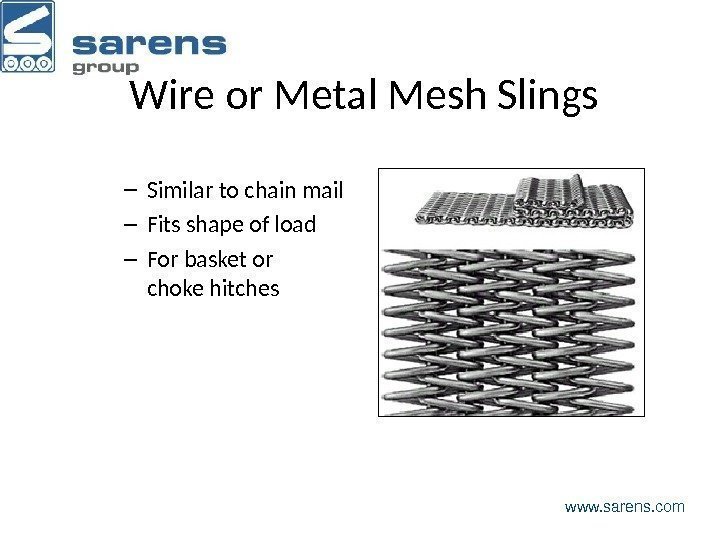
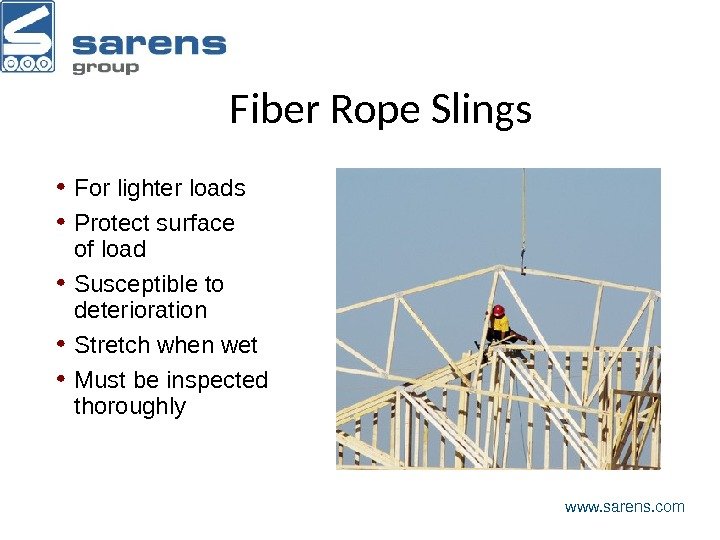
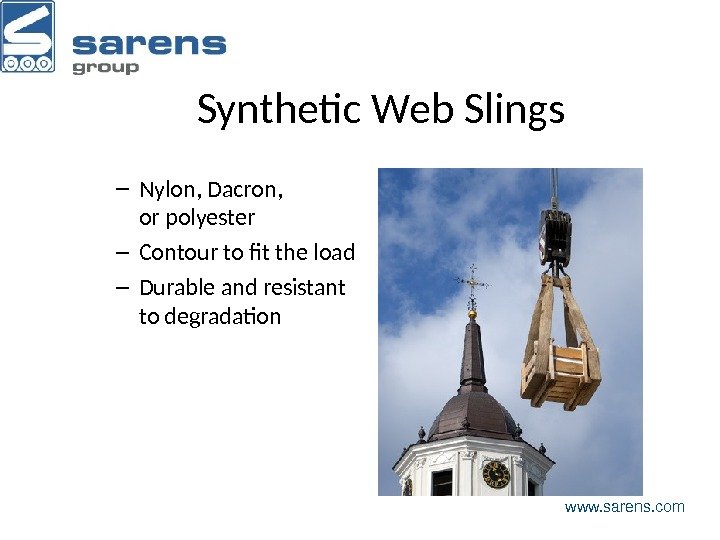
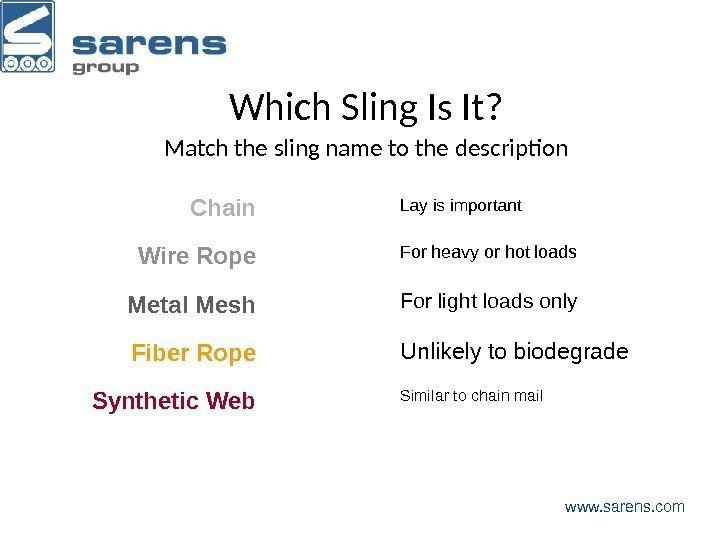
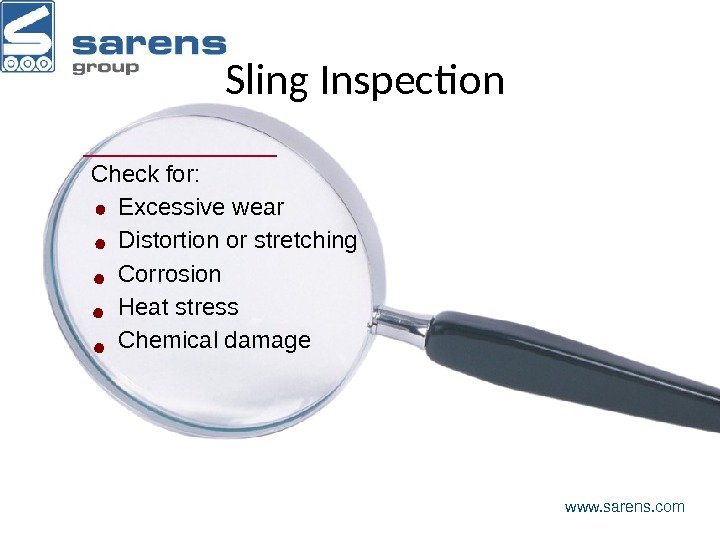
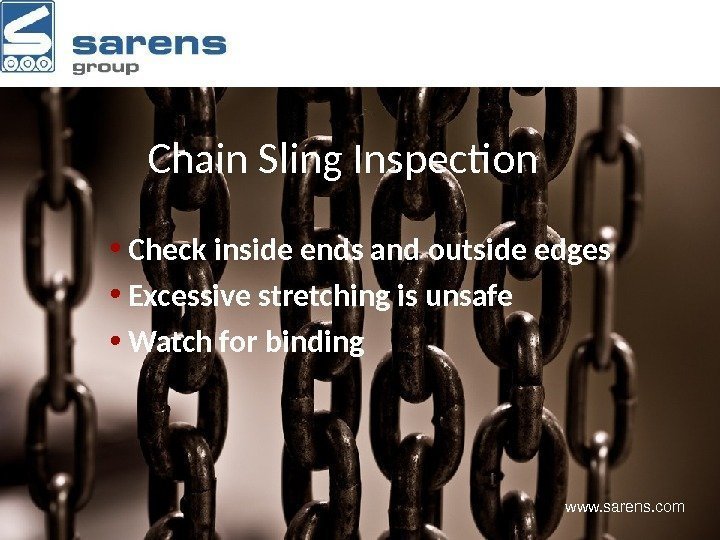
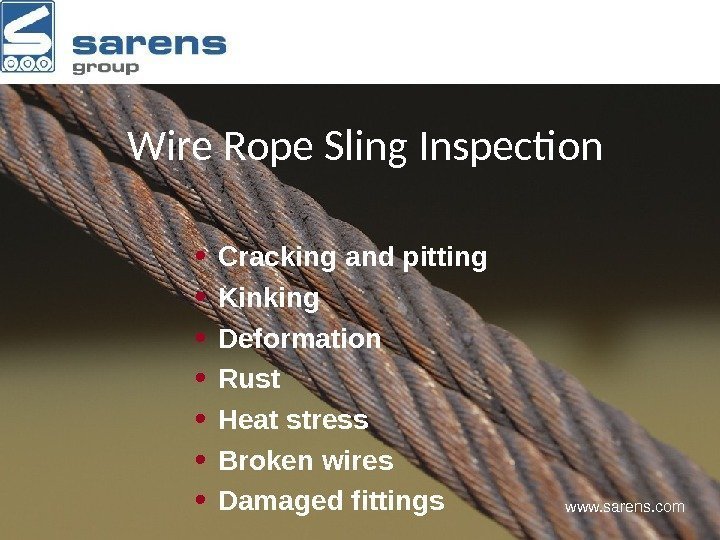
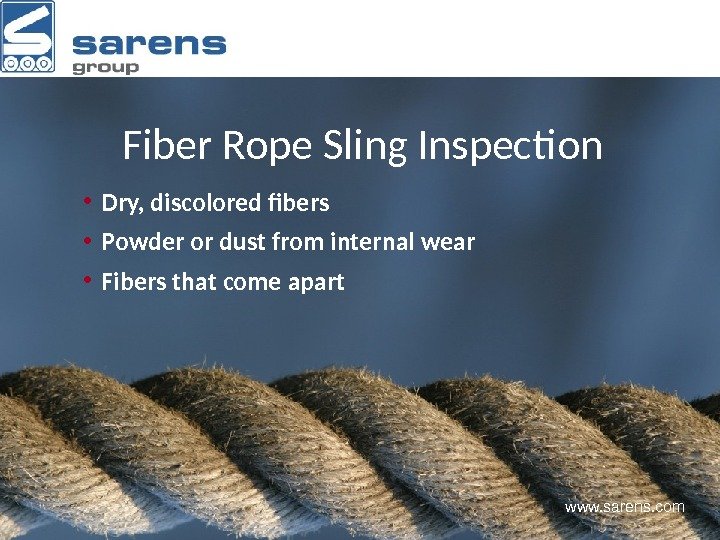
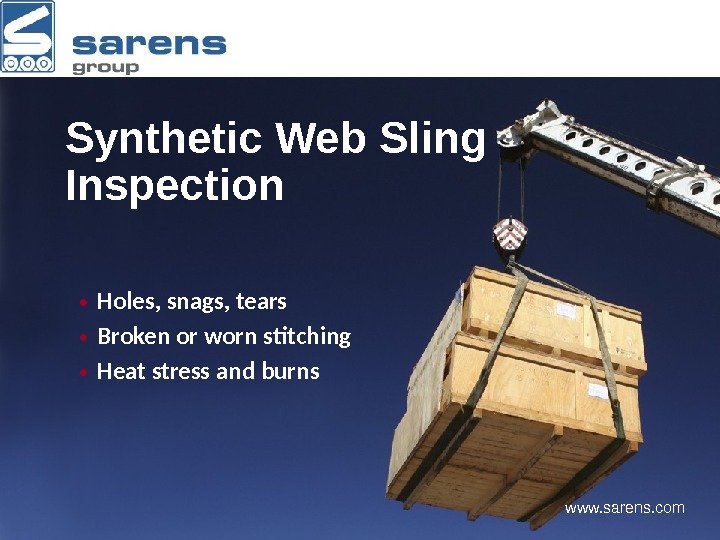
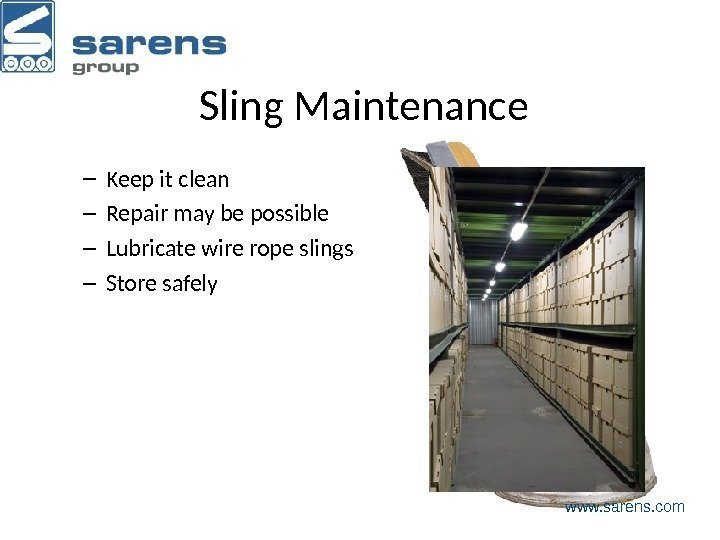
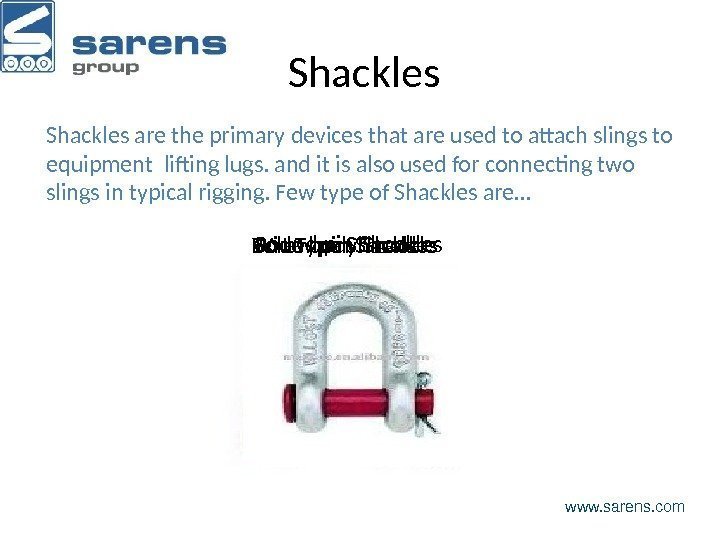
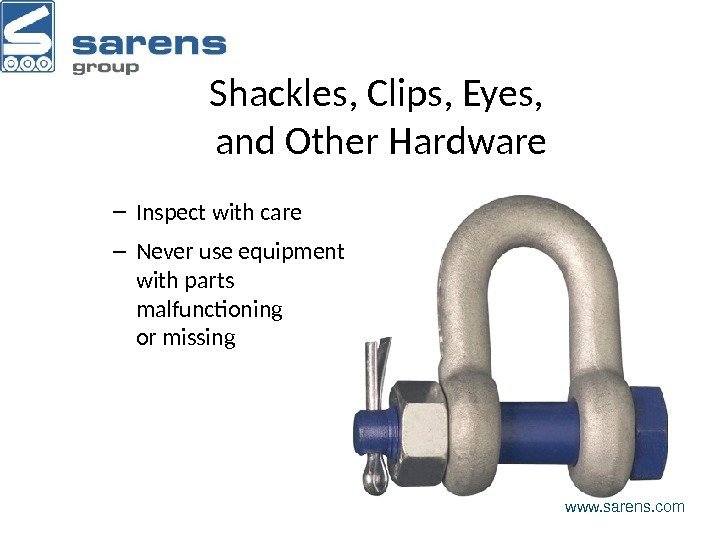
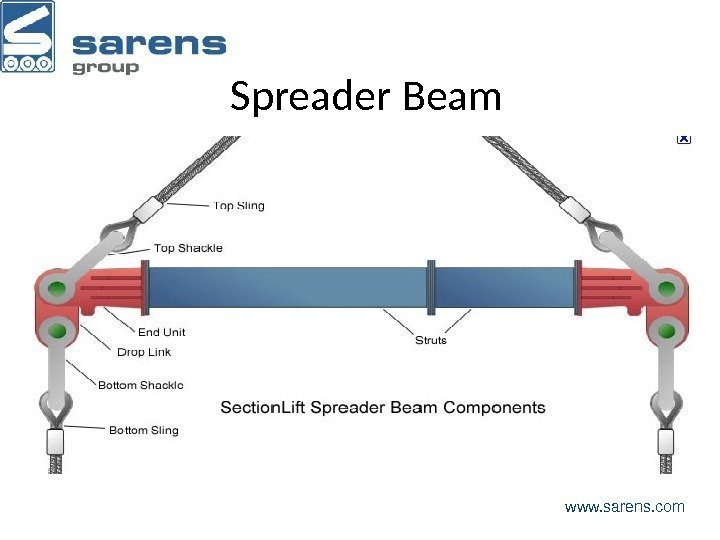
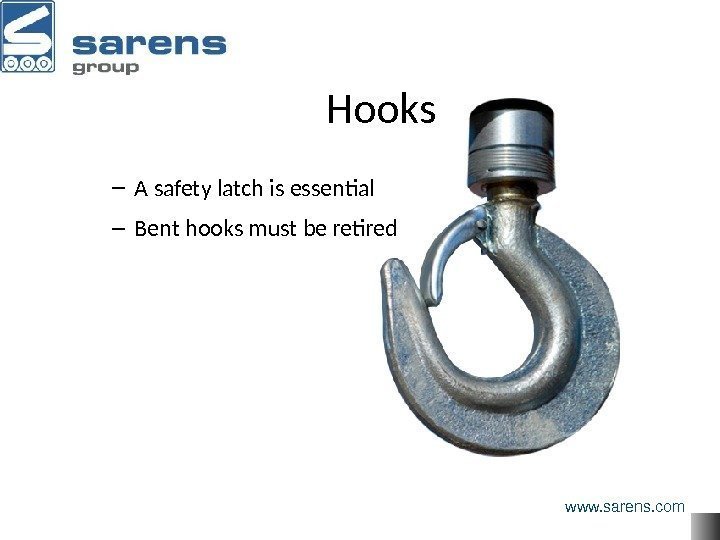
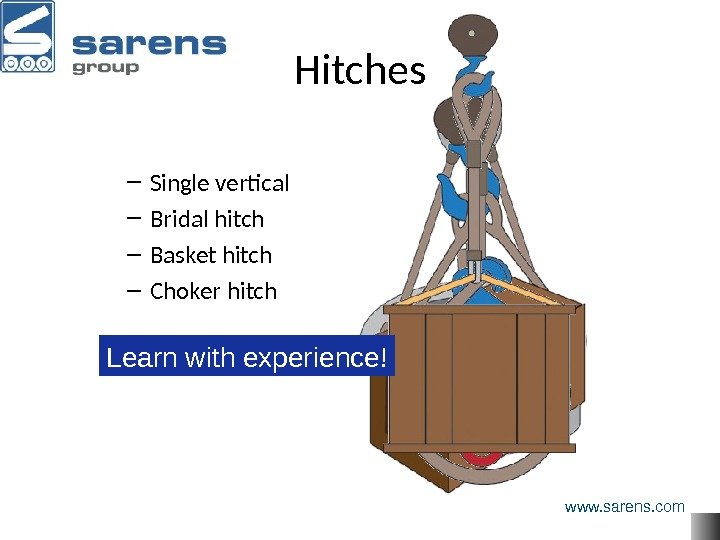
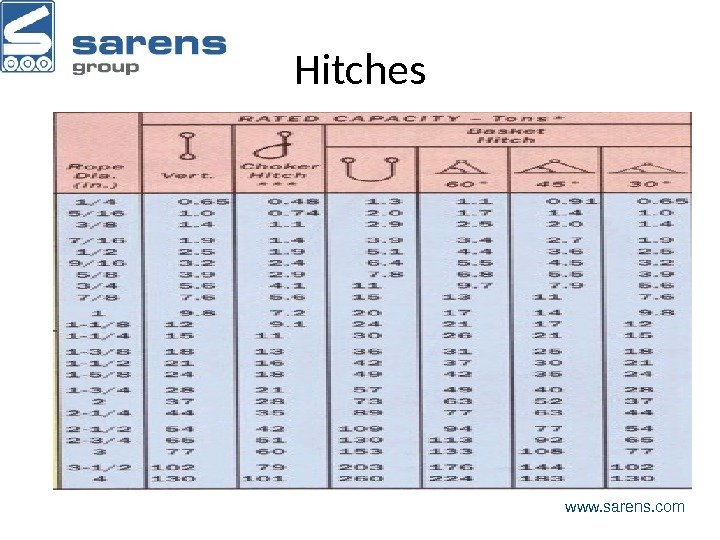
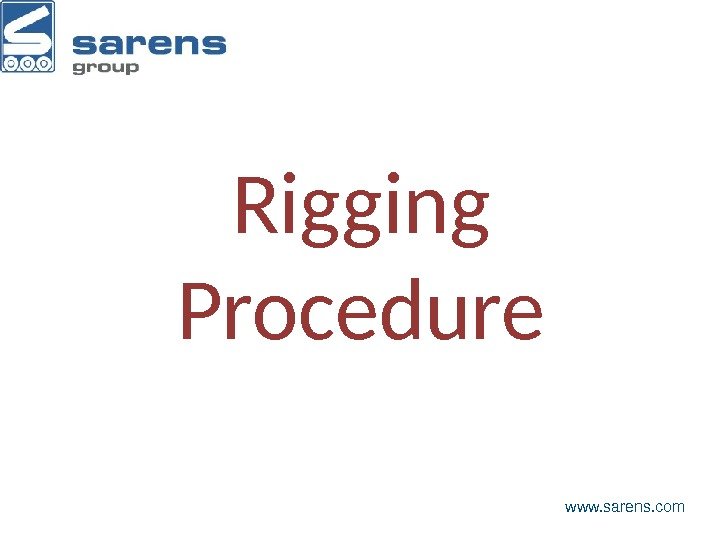
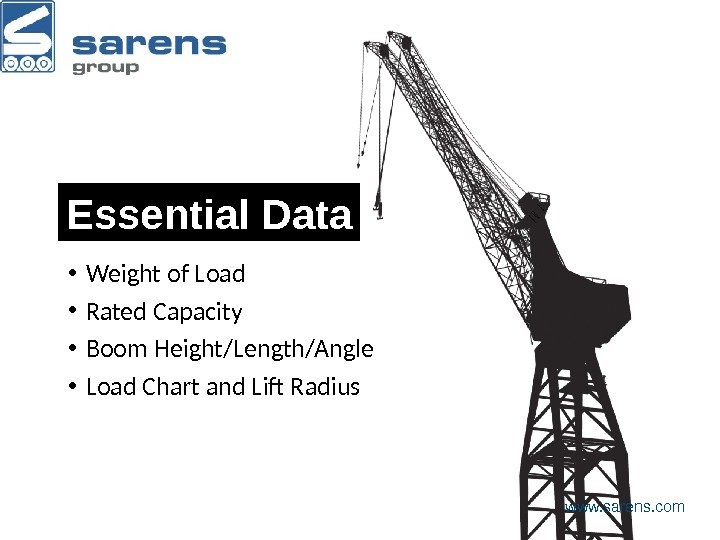
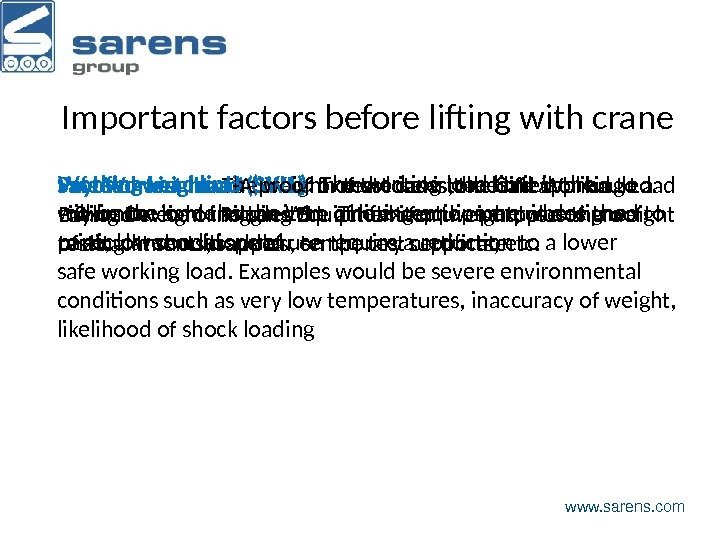

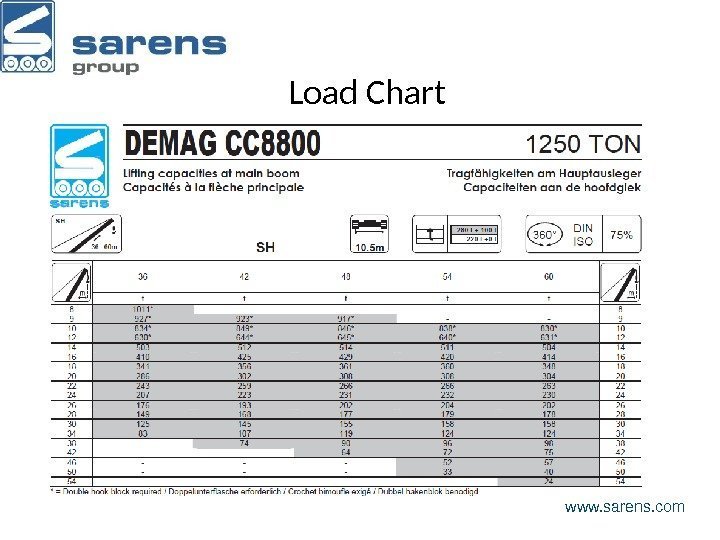
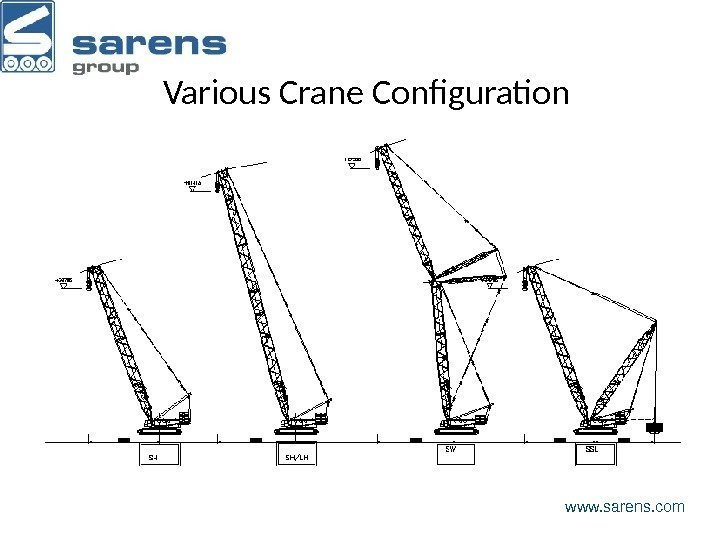
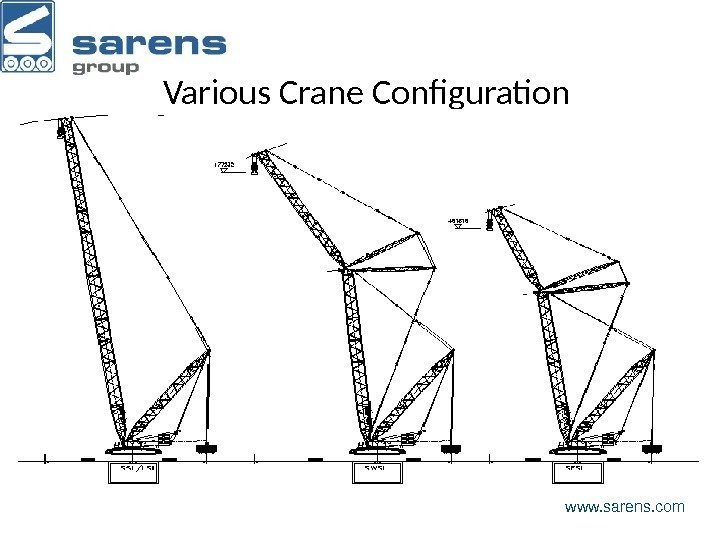
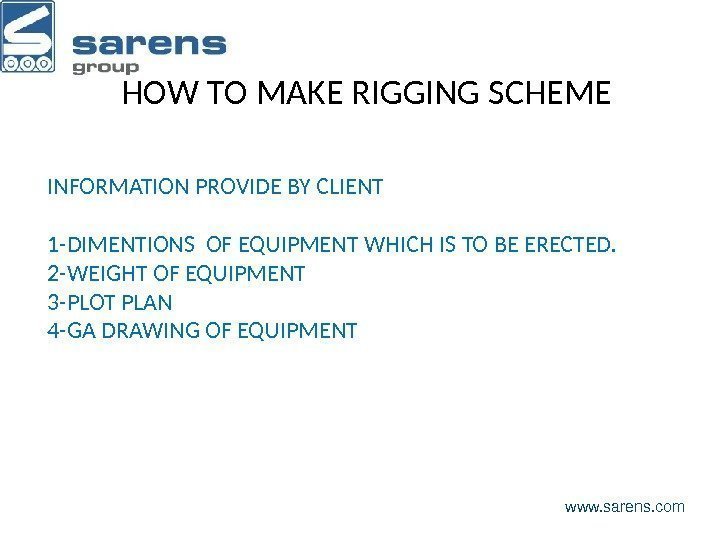
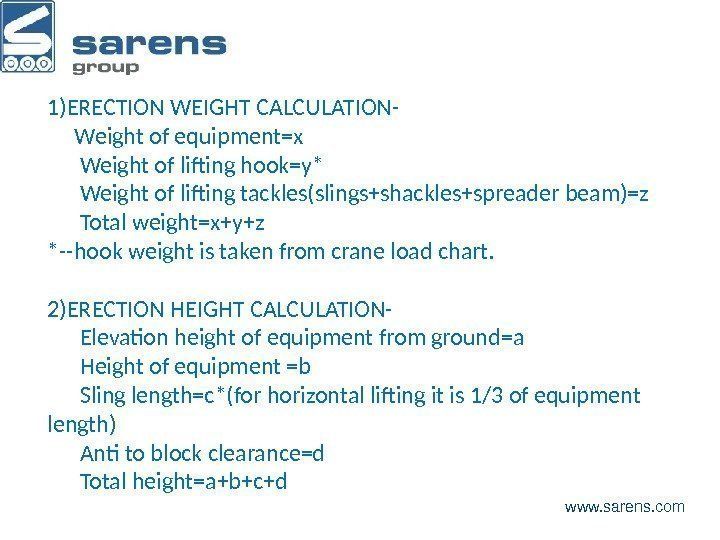
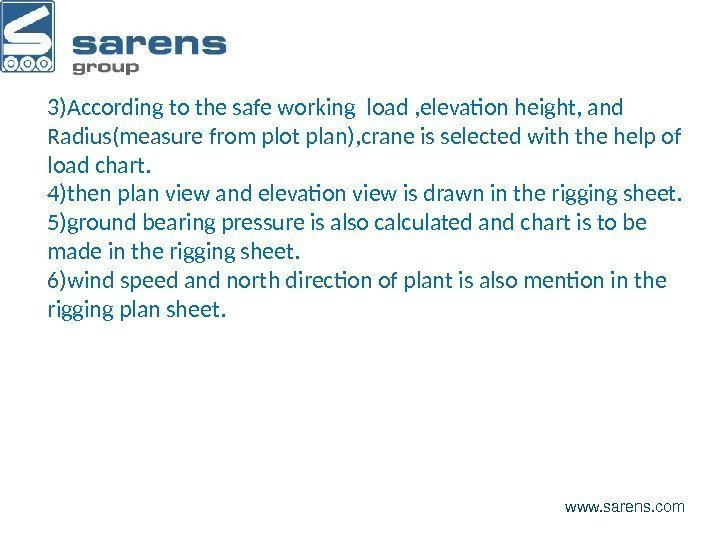
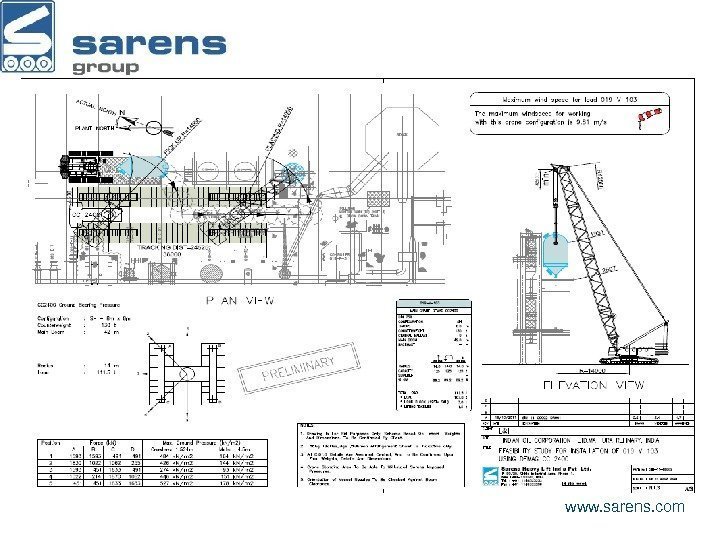
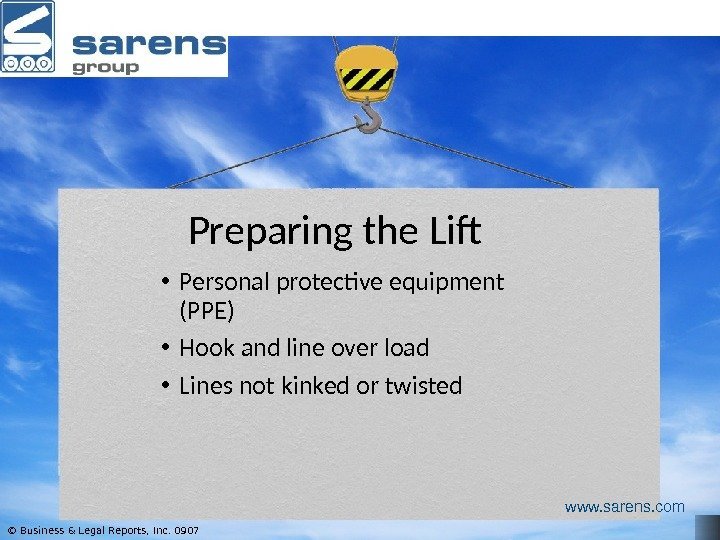
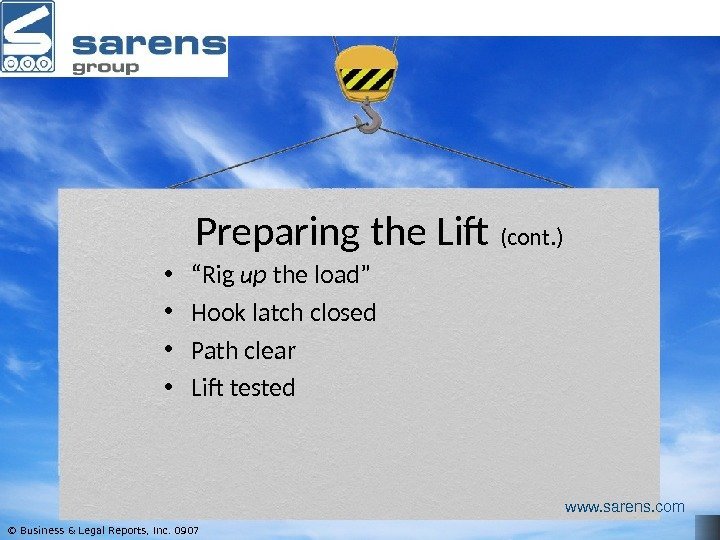
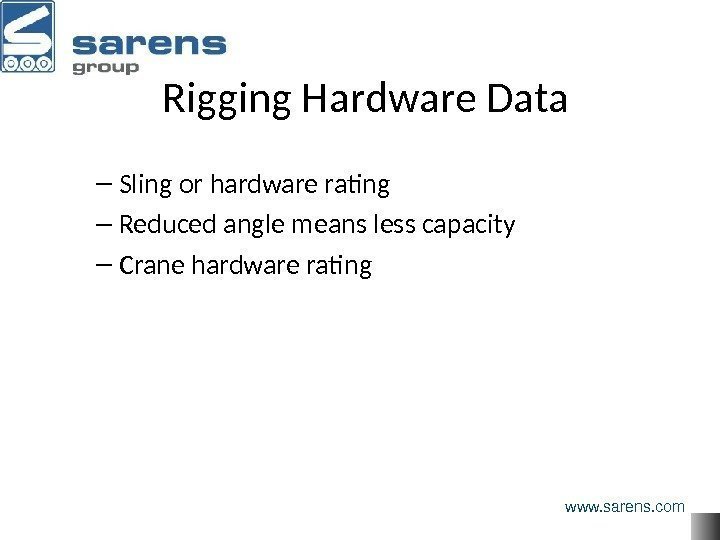
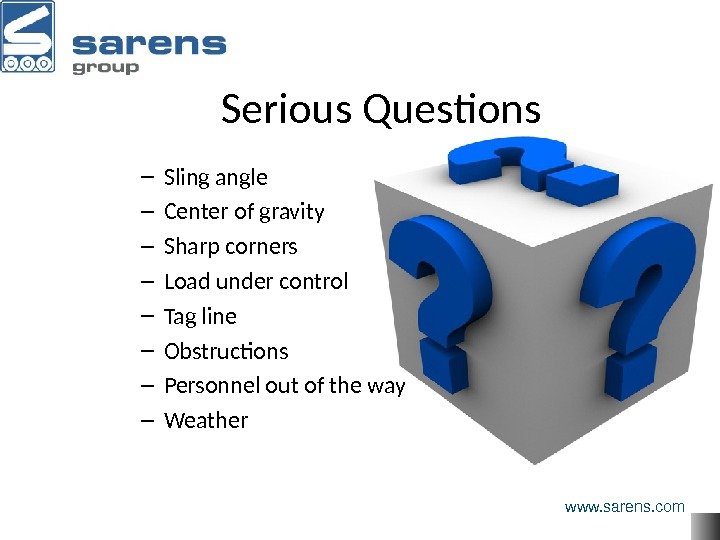
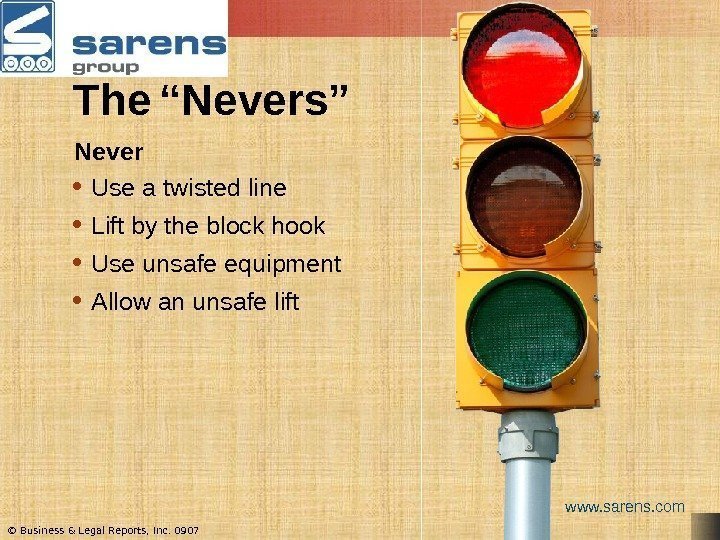
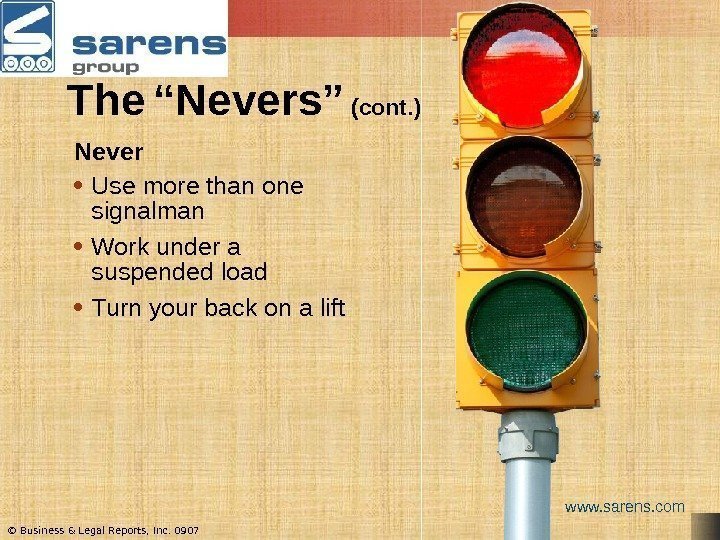
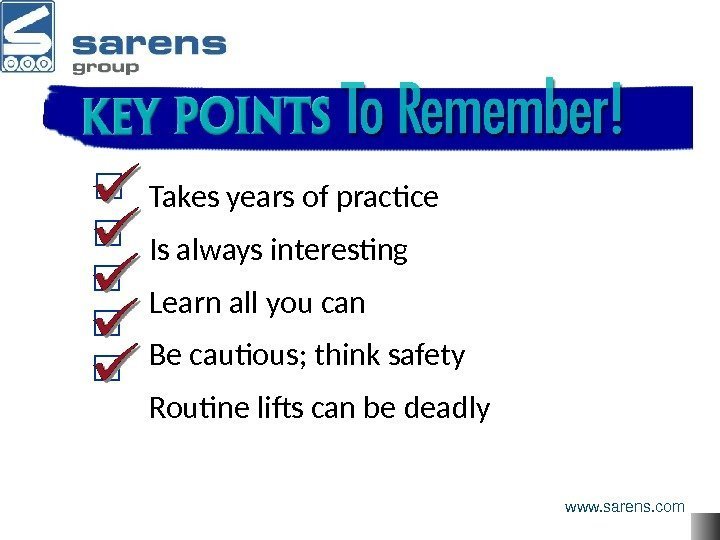
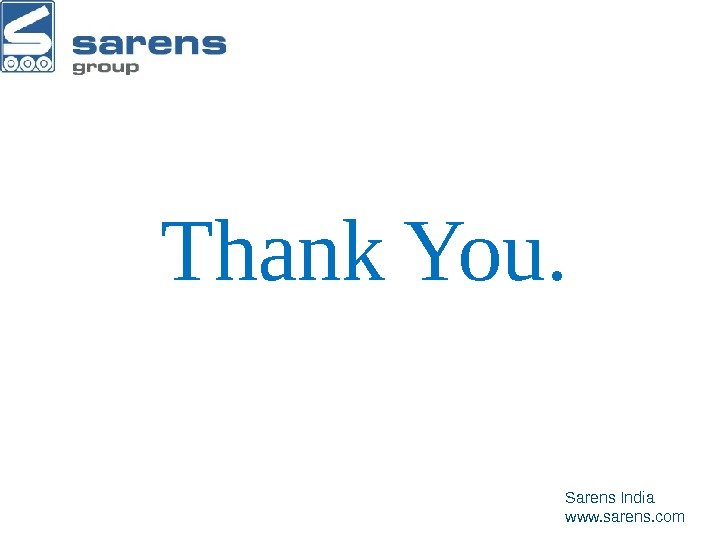
crane_general_presentation.ppt
- Размер: 8.9 Мб
- Автор: Хасан Кашауов
- Количество слайдов: 49
Описание презентации Cranes and Rigging www. sarens. com Understand по слайдам
 Cranes and Rigging www. sarens. com
Cranes and Rigging www. sarens. com
 Understand the crane and its operations Choose the correct sling or rigging hardware Inspect rigging hardware Rig a load correctly Session Objectives www. sarens. com
Understand the crane and its operations Choose the correct sling or rigging hardware Inspect rigging hardware Rig a load correctly Session Objectives www. sarens. com
 Introduction about Crane www. sarens. com. A crane is a type of machine, generally equipped with a hoist, wire ropes or chains, and sheaves, that can be used both to lift and lower materials and to move them horizontally. It uses one or more simple machines to create mechanical advantage and thus move loads beyond the normal capability of a man. Cranes are commonly employed in the transport industry for the loading and unloading of freight, in the construction industry for the movement of materials and in the manufacturing industry for the assembling of heavy equipment& erection of heavy equipment.
Introduction about Crane www. sarens. com. A crane is a type of machine, generally equipped with a hoist, wire ropes or chains, and sheaves, that can be used both to lift and lower materials and to move them horizontally. It uses one or more simple machines to create mechanical advantage and thus move loads beyond the normal capability of a man. Cranes are commonly employed in the transport industry for the loading and unloading of freight, in the construction industry for the movement of materials and in the manufacturing industry for the assembling of heavy equipment& erection of heavy equipment.
 www. sarens. com
www. sarens. com
 Working Principle of Crane www. sarens. com
Working Principle of Crane www. sarens. com
 Types of Cranes – Mobile – Telescopic – Tower – Gantry/Overhead www. sarens. com
Types of Cranes – Mobile – Telescopic – Tower – Gantry/Overhead www. sarens. com
 Crane Standards – ANSI/ASME – ANSI B 30. 2. 0, Overhead and Gantry Cranes – ANSI B 30. 3, Hammerhead Tower Cranes – ANSI B 30. 4, Portal, Tower, and Pillar Cranes – ANSI B 30. 5 Crawler, Locomotive, and Truck Cranes – ANSI B 30. 6, Derricks – ANSI B 30. 9, Slings – ANSI B 30. 10, Hooks – ANSI B 30. 19, Cableways – ANSI B 30. 20, Below-the-Hook Lifting Devices – ANSI B 56. 6, Rough Terrain Forklift Trucks www. sarens. com
Crane Standards – ANSI/ASME – ANSI B 30. 2. 0, Overhead and Gantry Cranes – ANSI B 30. 3, Hammerhead Tower Cranes – ANSI B 30. 4, Portal, Tower, and Pillar Cranes – ANSI B 30. 5 Crawler, Locomotive, and Truck Cranes – ANSI B 30. 6, Derricks – ANSI B 30. 9, Slings – ANSI B 30. 10, Hooks – ANSI B 30. 19, Cableways – ANSI B 30. 20, Below-the-Hook Lifting Devices – ANSI B 56. 6, Rough Terrain Forklift Trucks www. sarens. com
 Lifting Tackles www. sarens. com. Lifting tackles are used to connect load to the crane. The most commonly used lifting tackles are…. • Slings • Shackles • Lifting Beam / Spreader Beam
Lifting Tackles www. sarens. com. Lifting tackles are used to connect load to the crane. The most commonly used lifting tackles are…. • Slings • Shackles • Lifting Beam / Spreader Beam
 Sling Selection • Rated capacity • Material composition • Size, design, and configuration • Condition • Tags www. sarens. com
Sling Selection • Rated capacity • Material composition • Size, design, and configuration • Condition • Tags www. sarens. com
 Chain Slings – Strong – Fit shape of load – Tolerate high temperatures – Damaged by shocks – Watch for damage www. sarens. com
Chain Slings – Strong – Fit shape of load – Tolerate high temperatures – Damaged by shocks – Watch for damage www. sarens. com
 Wire Rope Slings – Composed of strands of wire rope – May have fiber core – Can experience cracking or kinking www. sarens. com
Wire Rope Slings – Composed of strands of wire rope – May have fiber core – Can experience cracking or kinking www. sarens. com
 Rope Lay – Right lay – Left lay www. sarens. com
Rope Lay – Right lay – Left lay www. sarens. com
 Rope Lay (cont. ) – Regular lay – Lang lay www. sarens. com
Rope Lay (cont. ) – Regular lay – Lang lay www. sarens. com
 Wire Rope Sling Selection – Strength – Flexibility – Durability www. sarens. com
Wire Rope Sling Selection – Strength – Flexibility – Durability www. sarens. com
 Wire or Metal Mesh Slings – Similar to chain mail – Fits shape of load – For basket or choke hitches www. sarens. com
Wire or Metal Mesh Slings – Similar to chain mail – Fits shape of load – For basket or choke hitches www. sarens. com
 Fiber Rope Slings • For lighter loads • Protect surface of load • Susceptible to deterioration • Stretch when wet • Must be inspected thoroughly www. sarens. com
Fiber Rope Slings • For lighter loads • Protect surface of load • Susceptible to deterioration • Stretch when wet • Must be inspected thoroughly www. sarens. com
 Synthetic Web Slings – Nylon, Dacron, or polyester – Contour to fit the load – Durable and resistant to degradation www. sarens. com
Synthetic Web Slings – Nylon, Dacron, or polyester – Contour to fit the load – Durable and resistant to degradation www. sarens. com
 Which Sling Is It? Match the sling name to the description Chain Wire Rope Metal Mesh Fiber Rope Synthetic Web Lay is important For heavy or hot loads Unlikely to biodegrade. For light loads only Similar to chain mail www. sarens. com
Which Sling Is It? Match the sling name to the description Chain Wire Rope Metal Mesh Fiber Rope Synthetic Web Lay is important For heavy or hot loads Unlikely to biodegrade. For light loads only Similar to chain mail www. sarens. com
 Check for: Excessive wear Distortion or stretching Corrosion Heat stress Chemical damage Sling Inspection www. sarens. com
Check for: Excessive wear Distortion or stretching Corrosion Heat stress Chemical damage Sling Inspection www. sarens. com
 Chain Sling Inspection • Check inside ends and outside edges • Excessive stretching is unsafe • Watch for binding www. sarens. com
Chain Sling Inspection • Check inside ends and outside edges • Excessive stretching is unsafe • Watch for binding www. sarens. com
 Wire Rope Sling Inspection • Cracking and pitting • Kinking • Deformation • Rust • Heat stress • Broken wires • Damaged fittings www. sarens. com
Wire Rope Sling Inspection • Cracking and pitting • Kinking • Deformation • Rust • Heat stress • Broken wires • Damaged fittings www. sarens. com
 Fiber Rope Sling Inspection • Dry, discolored fibers • Powder or dust from internal wear • Fibers that come apart www. sarens. com
Fiber Rope Sling Inspection • Dry, discolored fibers • Powder or dust from internal wear • Fibers that come apart www. sarens. com
 • Holes, snags, tears • Broken or worn stitching • Heat stress and burns. Synthetic Web Sling Inspection www. sarens. com
• Holes, snags, tears • Broken or worn stitching • Heat stress and burns. Synthetic Web Sling Inspection www. sarens. com
 Sling Maintenance – Keep it clean – Repair may be possible – Lubricate wire rope slings – Store safely www. sarens. com
Sling Maintenance – Keep it clean – Repair may be possible – Lubricate wire rope slings – Store safely www. sarens. com
 Shackles www. sarens. com. Shackles are the primary devices that are used to attach slings to equipment lifting lugs. and it is also used for connecting two slings in typical rigging. Few type of Shackles are… Bolt Type Shackle Wide body Shackle Screw pin Shackles. Round pin Shackles
Shackles www. sarens. com. Shackles are the primary devices that are used to attach slings to equipment lifting lugs. and it is also used for connecting two slings in typical rigging. Few type of Shackles are… Bolt Type Shackle Wide body Shackle Screw pin Shackles. Round pin Shackles
 Shackles, Clips, Eyes, and Other Hardware – Inspect with care – Never use equipment with parts malfunctioning or missing www. sarens. com
Shackles, Clips, Eyes, and Other Hardware – Inspect with care – Never use equipment with parts malfunctioning or missing www. sarens. com
 Spreader Beam www. sarens. com. A lifting beam is a solid or fabricated metal or wooden beam, suspended from a hoist/crane or from forks of a forklift, designed to provide multiple lifting points. The lifting beam enables the user to attach the load at more than one point therein securing and controlling the load’s movement. Lifting beams may have fixed or swivel hooks. Some lifting beams are spreader beams. Lifting Beams are used in low headroom applications, and structurally are able to handle the load throughout the beam spread. Beams allow multiple point pick up of the load for balance or support purposes. Beams can be used from two hoists to increase lift capacity.
Spreader Beam www. sarens. com. A lifting beam is a solid or fabricated metal or wooden beam, suspended from a hoist/crane or from forks of a forklift, designed to provide multiple lifting points. The lifting beam enables the user to attach the load at more than one point therein securing and controlling the load’s movement. Lifting beams may have fixed or swivel hooks. Some lifting beams are spreader beams. Lifting Beams are used in low headroom applications, and structurally are able to handle the load throughout the beam spread. Beams allow multiple point pick up of the load for balance or support purposes. Beams can be used from two hoists to increase lift capacity.
 Hooks – A safety latch is essential – Bent hooks must be retired www. sarens. com
Hooks – A safety latch is essential – Bent hooks must be retired www. sarens. com
 Hitches – Single vertical – Bridal hitch – Basket hitch – Choker hitch Learn with experience! www. sarens. com
Hitches – Single vertical – Bridal hitch – Basket hitch – Choker hitch Learn with experience! www. sarens. com
 Hitches www. sarens. com
Hitches www. sarens. com
 Rigging Procedure www. sarens. com
Rigging Procedure www. sarens. com
 • Weight of Load • Rated Capacity • Boom Height/Length/Angle • Load Chart and Lift Radius. Essential Data www. sarens. com
• Weight of Load • Rated Capacity • Boom Height/Length/Angle • Load Chart and Lift Radius. Essential Data www. sarens. com
 Important factors before lifting with crane www. sarens. com. Working Load limit (WLL) : The working load limit is the maximum load that an item of lifting equipment is designed to raise, lower or suspend. Payload weight : The weight of the item to be lifted or hauled. Payload weight includes the actual item weight, plus the weight of attachments, saddles, temporary supports, etc. Safe Working Load (SWL): In most cases, the Safe Working Load will be the same as the WLL. The exceptions are where the particular conditions of use require a reduction to a lower safe working load. Examples would be severe environmental conditions such as very low temperatures, inaccuracy of weight, likelihood of shock loading Proof or test load — A proof or test load is the load applied to a Lifting Device or Rigging Equipment for the purpose of proof testing. It should appear on the test certificate.
Important factors before lifting with crane www. sarens. com. Working Load limit (WLL) : The working load limit is the maximum load that an item of lifting equipment is designed to raise, lower or suspend. Payload weight : The weight of the item to be lifted or hauled. Payload weight includes the actual item weight, plus the weight of attachments, saddles, temporary supports, etc. Safe Working Load (SWL): In most cases, the Safe Working Load will be the same as the WLL. The exceptions are where the particular conditions of use require a reduction to a lower safe working load. Examples would be severe environmental conditions such as very low temperatures, inaccuracy of weight, likelihood of shock loading Proof or test load — A proof or test load is the load applied to a Lifting Device or Rigging Equipment for the purpose of proof testing. It should appear on the test certificate.
 Load Chart www. sarens. com. Load chart provides the capacity of crane at various boom length, radius, boom angle and various configuration.
Load Chart www. sarens. com. Load chart provides the capacity of crane at various boom length, radius, boom angle and various configuration.
 Load Chart www. sarens. com
Load Chart www. sarens. com
 Various Crane Configuration www. sarens. com
Various Crane Configuration www. sarens. com
 Various Crane Configuration www. sarens. com
Various Crane Configuration www. sarens. com
 HOW TO MAKE RIGGING SCHEME www. sarens. com. INFORMATION PROVIDE BY CLIENT 1 -DIMENTIONS OF EQUIPMENT WHICH IS TO BE ERECTED. 2 -WEIGHT OF EQUIPMENT 3 -PLOT PLAN 4 -GA DRAWING OF EQUIPMENT
HOW TO MAKE RIGGING SCHEME www. sarens. com. INFORMATION PROVIDE BY CLIENT 1 -DIMENTIONS OF EQUIPMENT WHICH IS TO BE ERECTED. 2 -WEIGHT OF EQUIPMENT 3 -PLOT PLAN 4 -GA DRAWING OF EQUIPMENT
 www. sarens. com 1)ERECTION WEIGHT CALCULATION- Weight of equipment=x Weight of lifting hook=y* Weight of lifting tackles(slings+shackles+spreader beam)=z Total weight=x+y+z *—hook weight is taken from crane load chart. 2)ERECTION HEIGHT CALCULATION- Elevation height of equipment from ground=a Height of equipment =b Sling length=c*(for horizontal lifting it is 1/3 of equipment length) Anti to block clearance=d Total height=a+b+c+d
www. sarens. com 1)ERECTION WEIGHT CALCULATION- Weight of equipment=x Weight of lifting hook=y* Weight of lifting tackles(slings+shackles+spreader beam)=z Total weight=x+y+z *—hook weight is taken from crane load chart. 2)ERECTION HEIGHT CALCULATION- Elevation height of equipment from ground=a Height of equipment =b Sling length=c*(for horizontal lifting it is 1/3 of equipment length) Anti to block clearance=d Total height=a+b+c+d
 www. sarens. com 3)According to the safe working load , elevation height, and Radius(measure from plot plan), crane is selected with the help of load chart. 4)then plan view and elevation view is drawn in the rigging sheet. 5)ground bearing pressure is also calculated and chart is to be made in the rigging sheet. 6)wind speed and north direction of plant is also mention in the rigging plan sheet.
www. sarens. com 3)According to the safe working load , elevation height, and Radius(measure from plot plan), crane is selected with the help of load chart. 4)then plan view and elevation view is drawn in the rigging sheet. 5)ground bearing pressure is also calculated and chart is to be made in the rigging sheet. 6)wind speed and north direction of plant is also mention in the rigging plan sheet.
 www. sarens. com
www. sarens. com
 Preparing the Lift • Personal protective equipment (PPE) • Hook and line over load • Lines not kinked or twisted © Business & Legal Reports, Inc. 0907 www. sarens. com
Preparing the Lift • Personal protective equipment (PPE) • Hook and line over load • Lines not kinked or twisted © Business & Legal Reports, Inc. 0907 www. sarens. com
 Preparing the Lift (cont. ) • “ Rig up the load” • Hook latch closed • Path clear • Lift tested © Business & Legal Reports, Inc. 0907 www. sarens. com
Preparing the Lift (cont. ) • “ Rig up the load” • Hook latch closed • Path clear • Lift tested © Business & Legal Reports, Inc. 0907 www. sarens. com
 Rigging Hardware Data – Sling or hardware rating – Reduced angle means less capacity – Crane hardware rating www. sarens. com
Rigging Hardware Data – Sling or hardware rating – Reduced angle means less capacity – Crane hardware rating www. sarens. com
 Serious Questions – Sling angle – Center of gravity – Sharp corners – Load under control – Tag line – Obstructions – Personnel out of the way – Weather www. sarens. com
Serious Questions – Sling angle – Center of gravity – Sharp corners – Load under control – Tag line – Obstructions – Personnel out of the way – Weather www. sarens. com
 © Business & Legal Reports, Inc. 0907 The “Nevers” • Use a twisted line • Lift by the block hook • Use unsafe equipment • Allow an unsafe lift. Never www. sarens. com
© Business & Legal Reports, Inc. 0907 The “Nevers” • Use a twisted line • Lift by the block hook • Use unsafe equipment • Allow an unsafe lift. Never www. sarens. com
 © Business & Legal Reports, Inc. 0907 • Use more than one signalman • Work under a suspended load • Turn your back on a lift. The “Nevers” (cont. ) Never www. sarens. com
© Business & Legal Reports, Inc. 0907 • Use more than one signalman • Work under a suspended load • Turn your back on a lift. The “Nevers” (cont. ) Never www. sarens. com
 Key Points to Remember! Takes years of practice Is always interesting Learn all you can Be cautious; think safety Routine lifts can be deadly www. sarens. com
Key Points to Remember! Takes years of practice Is always interesting Learn all you can Be cautious; think safety Routine lifts can be deadly www. sarens. com
 Key Points to Remember! Sarens India www. sarens. com. Thank You.
Key Points to Remember! Sarens India www. sarens. com. Thank You.
